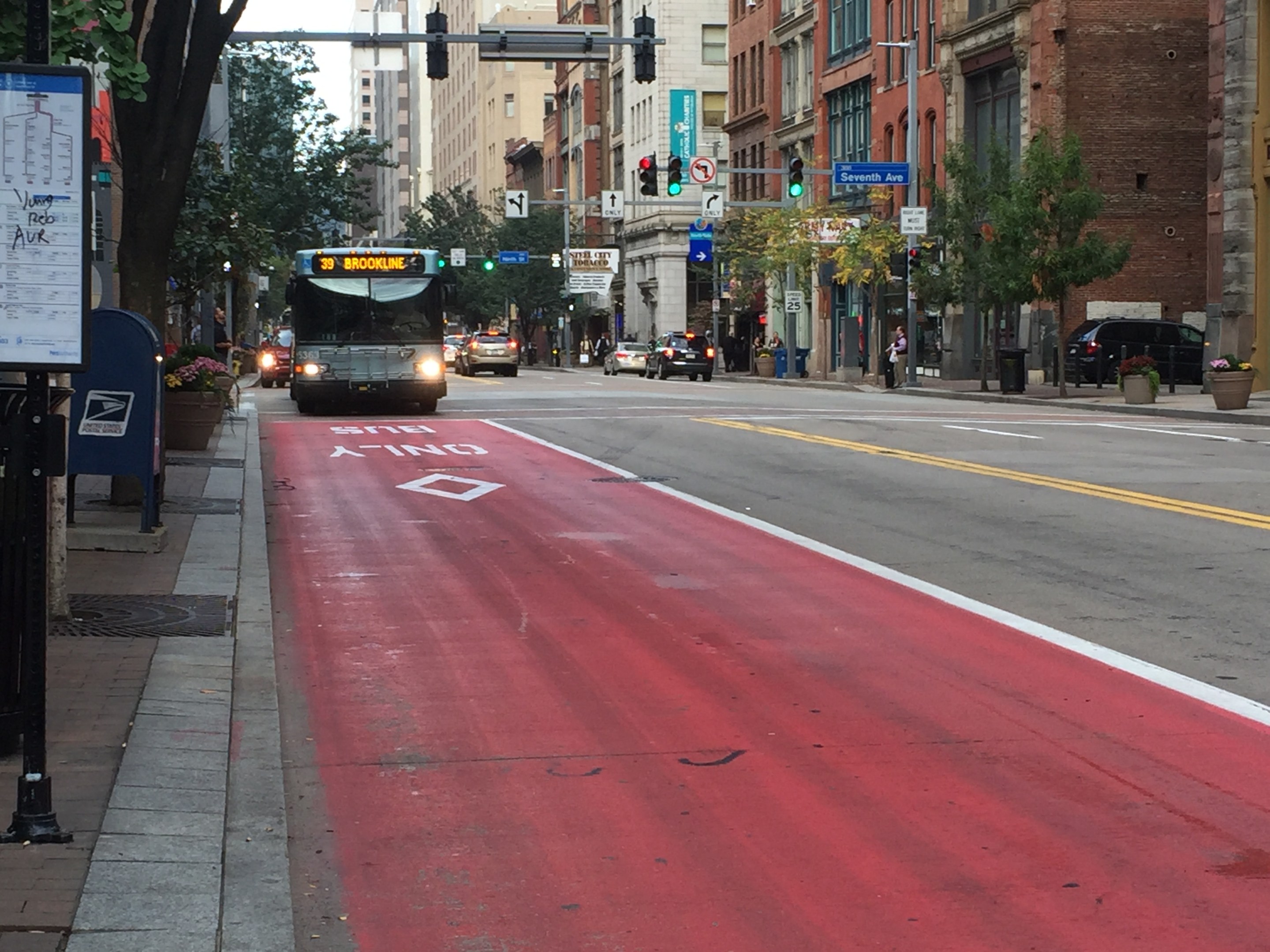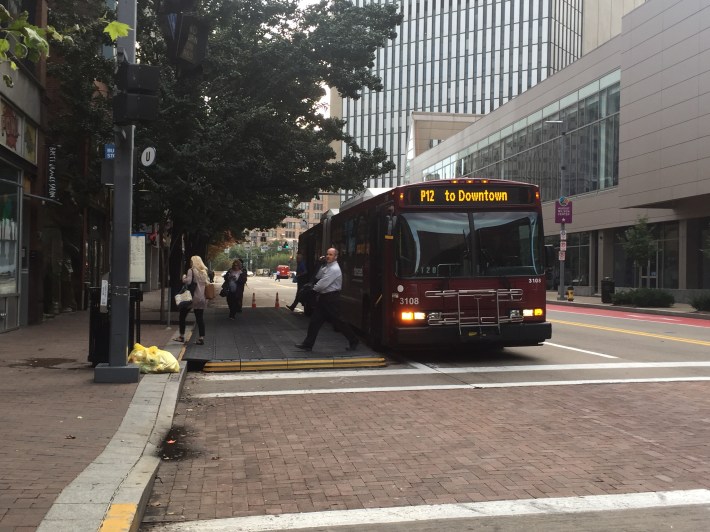By the numbers, Pittsburgh's Liberty Avenue is a walking and transit street.
During the busiest times of day, 6,000 bus riders and 2,000 pedestrians travel the corridor per hour, compared to 1,200 drivers.
But until last month, you'd never guess from looking at the physical design of Liberty Avenue that transit riders and pedestrians are so numerous. The vast majority of its 50-foot width was dedicated to general travel lanes, so a relatively small number of motorists were slowing down the far larger number of transit riders.
Now Pittsburgh residents are getting a taste of how Liberty Avenue can work when it's designed to prioritize transit riders. For the next 18 months, the city is testing out a red bus lane and raised bus bulbs on a two-block stretch of the road.
Pittsburgh has long operated a system of exclusive transitways where only buses are allowed. But once those busways get to downtown streets, the transit priority disappears and bus riders are mired in traffic. There are just a few downtown bus lanes.
The bus priority demo is a project of Envision Downtown, a non-profit partnership between the downtown business association and Mayor's Bill Peduto's office. "Over half of all our downtown commuters come by transit," said Envision Downtown's Sean Luther. "We need to... embrace them downtown, instead of treating them like second class citizens."
Only one side of Liberty has the bus lane. On the other side, Envision Downtown is experimenting with raised bus bulbs using inexpensive sidewalk extenders made out of modular, hard rubber components that snap into place. The bus bulbs speed up boarding since bus drivers don't have to pull in and out of traffic, and free up some room on the sidewalks. The whole demo cost $50,000.
A later phase of the demo will add corner sidewalk extensions using paint and planters. "We're really working to shrink the crossing distance for pedestrians, which is 50 feet across," said Luther.
Downtown Pittsburgh's streets are narrower than in many other mid-sized cities, which makes building public support for bus lanes more difficult, said Luther. The downtown bus lane network has shrunk over the years, a trend he hopes the pilot will help reverse.
"It can be very hard to generate the political capital that we need to make these types of changes," said Luther said. But so far, it seems to be working well. "We did a lot of front end outreach [to businesses and transit riders] to make sure this was a project that was going to be embraced. We haven’t gotten a lot of complaints."
After the 18-month demo, Envision Downtown will publish an evaluation and recommend whether to extend or remove the bus lane.







